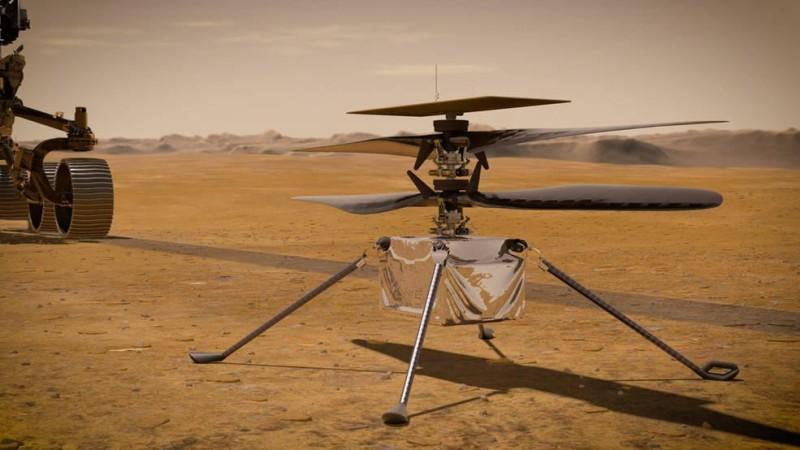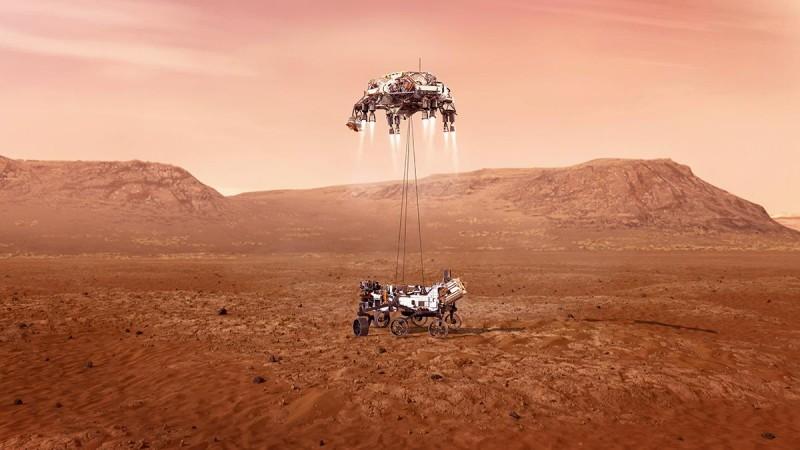The ambitious first flight of NASA's Ingenuity Mars Helicopter has been delayed by a few more days and had been rescheduled for 14 April 2020. The delay was caused by the activation of a safeguard mechanism known as the 'watchdog timer' that prevented the takeoff of the rotorcraft.
In a statement, NASA said that the research team is reviewing the data to verify and understand the issue. Confirming the safety of the 4-pound vehicle, the space agency said, "The helicopter is safe and healthy and communicated its full telemetry set to Earth."
What Happened?

Ingenuity is NASA's first aircraft to attempt a controlled and powered atmospheric fight on another planet. It was 'dropped off' at a chosen site at the Jezero Crater by the Perseverance rover on 3rd April. On 4th April, it braced Mars' freezing night temperatures and survived its first Martian night on its own. Data about the performance of the helicopter's power and thermal-control systems were gathered and analysed.
On 8th April, the restraints holding the two rotor blades were released and tested at low speeds of 50 revolutions per minute. Assessments of the onboard computer, electronic components, and other crucial technical aspects commenced.
“Mind-bottling, isn't it?”
— NASA JPL (@NASAJPL) April 8, 2021
The blades of glory, aka rotor blades of the #MarsHelicopter, have been unlocked and are ready for testing. Next, we’ll do a slow-speed spin-up of the blades for the first time on the Martian surface. https://t.co/TNCdXWcKWE pic.twitter.com/ZUTHRGFGia
However, data received on 9 April forced NASA to push the flight to no earlier than 14th April. When a high-speed spin test of the rotors was being conducted on Friday, the test was prematurely halted when the command sequence guiding the test was ended due to a 'watchdog' timer expiration. The success of the exercise would have seen the rotors reach speeds of up to 2,400 revolutions per minute.
The watchdog timer's crucial function is to oversee the command sequence. In the event of any potential problems, it alerts the system. Therefore, it ensures the safety of the aircraft's system by not moving forward with the flight if an issue is detected. "This occurred as it was trying to transition the flight computer from 'Pre-Flight' to 'Flight' mode," explained NASA.
Journey Towards Creating History
While Ingenuity is yet to make its path-breaking flight, its journey to Mars has not been short of historic. Safely nestled under Perseverance's belly, the helicopter reached the red planet when the rover landed at the Octavia E. Butler Landing site in February 2021. After Perseverance reached the chosen 'airfield' for Ingenuity's takeoff, the rotorcraft was untethered and left to fend for itself; which it did.

Ingenuity also carries with it the burden of being a technology demonstration—a project that is directed towards testing a new capability for the very first time within a limited scope. Therefore, its success will decide the feasibility of the potential employment of drones on other planets. Upon accomplishing its first flight, testing of the vehicle on the Martian surface is set to be completed within 30 sols or Martian days (a day on Mars is around 24.6 hours).
Teddy Tzanetos, deputy operations lead for the Ingenuity Mars Helicopter at JPL, said in a statement, "Our 30-sol test schedule is frontloaded with exciting milestones. Whatever the future holds, we will acquire all the flight data we can within that timeframe." Eventually, Perseverance's probing of the Jezero Crater will continue at a rapid pace.











